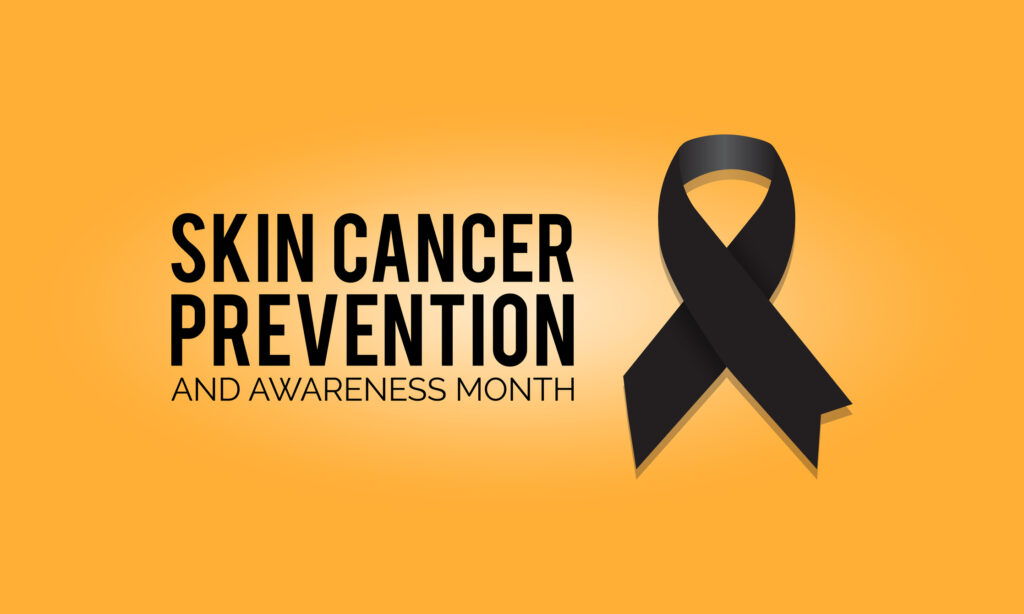May is Skin Cancer Prevention and Awareness Month

Did you know that May is Skin Cancer Prevention and Awareness Month? It’s a great annual reminder to check yourself for early signs of skin cancer, but you really should be examining your skin every month. Skin cancer is the most common cancer in the nation, with over five million people in the United States receiving a skin cancer diagnosis each year. Protecting your skin from the sun is an important part of preventing skin cancer, and examining your skin regularly is crucial to detecting skin cancer in the early stages. The earlier it’s detected, the more effectively it can be treated. Here, we offer some facts about skin cancer that we encourage you to share with others.
It’s been said that if cancer is “the Big C,” then skin cancer can be considered “the Big See.” If you’re paying attention, you can see the signs of skin cancer before the disease has progressed. There are two ways to think about this while you’re examining your skin. The first involves three simple words: new, changing, and unusual. If you notice anything on your skin that falls into one of those categories, see your dermatologist as soon as possible. Of course, you should also be seeing your dermatologist at least once a year for skin care screenings.
Another way to examine your skin is to keep the letters A, B, C, D, and E in mind. Using an ABCDE assessment, you can catch melanoma by noticing moles on your skin that have:
- Asymmetry, with a shape that isn’t uniform.
- Borders that are not well-defined.
- Colors that differ within a mole, because benign moles usually only have one color.
- Diameter that’s larger than 6mm, about as thick as a pencil.
- Evolution, meaning the mole changes size, shape, or color.
It’s important to stay on top of skin cancer screenings, because early detection is a big part of successful treatment. The most common kinds of skin cancer, basal cell and squamous cell carcinoma, have a high cure rate if detected at an early stage. What’s even more noteworthy, though, is that melanoma, the most deadly type of skin cancer, has a five-year survival rate of 99 percent if it’s detected before it makes its way to the lymph nodes.
Just as important as awareness of skin cancer is prevention. Fortunately, you can be proactive about sun protection and greatly reduce your likelihood of developing skin cancer. During the month of May, the American Association of Dermatology wants to spread the message that it’s important to #PracticeSafeSun. How? Reduce your sun exposure by staying in the shade when you can, particularly between the hours of 10 a.m. and 2 p.m., and wearing protective clothing, including a wide-brimmed hat and UV-protective sunglasses. Always use broad-spectrum, water-resistant sunscreen with an SPF of 30 or higher, even on cloudy days. Reapply your sunscreen every two hours and any time your skin gets wet, whether with water or sweat.
To spread the word about skin cancer prevention, take advantage of this toolkit that helps you #ShareTheFacts. when you need help caring for your skin, contact Swinyer-Woseth Dermatology to schedule a consultation. We’re committed to providing superior, professional skin care in a manner that’s practical, efficient, and compassionate. With over 30 years of experience supplying dermatological services in Salt Lake City, we offer a variety of services, from cosmetic skincare to treatment for skin cancer. Our team of board- certified dermatologists and licensed cosmetic service providers are here to provide you the care you need in a comfortable, professional atmosphere. Call (801) 682-4715 or contact us through our website.

